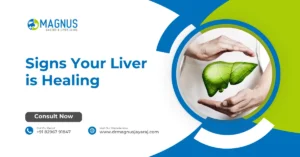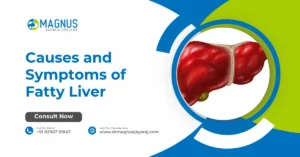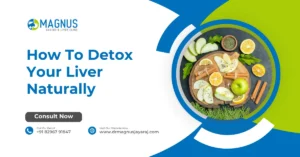Non-alcoholic fatty liver disease (NAFLD) is a condition where excess fat builds up in the liver without significant alcohol consumption. Often silent in its early stages, it can progress to inflammation, liver damage, and metabolic complications if left unchecked. Addressing it promptly with a personalized approach is essential. Non alcoholic fatty liver disease treatment focuses on lifestyle modifications, diet, and medical guidance to prevent progression and support overall liver health. Understanding this condition is the first step toward reclaiming vitality and preventing long-term consequences.
What is Metabolic Dysfunction-Associated Steatotic Liver Disease?
Metabolic dysfunction-associated steatotic liver disease (MASLD) is a modern term describing liver fat accumulation linked to metabolic issues like insulin resistance, obesity, and high blood sugar. Unlike alcohol-related liver damage, MASLD develops silently, often without obvious symptoms, making early detection critical.
- Connection with metabolism: MASLD is closely tied to metabolic syndrome, where the body struggles to manage glucose and fats efficiently. This dysfunction causes fat to accumulate in liver cells, increasing the need for early intervention.
- Impact on overall health: Untreated MASLD can progress to inflammation, scarring, and even cirrhosis. Effective non alcoholic fatty liver disease treatment addresses both liver health and underlying metabolic imbalances.
- Lifestyle significance: Diet, physical activity, and weight management play a pivotal role in managing MASLD. Tailored non alcoholic fatty liver disease treatment plans focus on sustainable lifestyle changes alongside medical monitoring to restore liver function.
Causes of Non-Alcoholic Fatty Liver Disease
Understanding the root causes of NAFLD is key to effective non alcoholic fatty liver disease treatment. Multiple factors contribute to fat accumulation in the liver, often working together to trigger the condition.
- Obesity and sedentary lifestyle: Excess body weight, particularly around the abdomen, increases fat deposition in the liver. Coupled with inactivity, this makes the liver more susceptible to fat buildup, highlighting the importance of regular exercise and weight management in non alcoholic fatty liver disease treatment.
- Insulin resistance and diabetes: High blood sugar and insulin resistance force the liver to store more fat. Individuals with diabetes or pre-diabetes are at a heightened risk, making tailored medical supervision crucial in non alcoholic fatty liver disease causes and treatment.
- Poor dietary habits: Diets high in refined sugars, saturated fats, and processed foods contribute significantly to liver fat accumulation. Addressing these habits is a central component of non alcoholic fatty liver disease treatment.
- Genetic and hormonal factors: Family history, certain genes, and hormonal imbalances can predispose individuals to NAFLD. Recognizing these risk factors helps in customizing preventive strategies and treatment approaches.

Symptoms of Non-Alcoholic Fatty Liver Disease
Non-alcoholic fatty liver disease often develops quietly, making early recognition essential for effective non alcoholic fatty liver disease treatment. Symptoms may be subtle but can impact overall well-being over time.
- Fatigue and weakness: Many individuals experience persistent tiredness, even with adequate rest. This low energy often stems from liver inflammation and impaired metabolic function, emphasizing the need for early intervention.
- Abdominal discomfort or pain: Non alcoholic fatty liver disease pain is commonly felt in the upper right abdomen, where the liver is located. The discomfort can range from dull aches to mild pressure, signaling fat accumulation and possible inflammation.
- Unexplained weight changes: Sudden weight gain or difficulty losing weight despite healthy habits can indicate liver fat buildup. Monitoring these changes alongside lifestyle adjustments forms a key part of non alcoholic fatty liver disease treatment.
- Digestive issues and bloating: Some patients report indigestion, nausea, or bloating due to liver stress. Recognizing these signs early allows for timely dietary and medical strategies to prevent progression.
Risk Factors for Non-Alcoholic Fatty Liver Disease
Identifying risk factors is crucial for effective non alcoholic fatty liver disease treatment and for preventing complications. Several lifestyle and health conditions increase susceptibility to liver fat accumulation.
- Obesity and central fat accumulation: Excess weight, especially around the abdomen, is a major risk factor. Central obesity stresses the liver, contributing to fat storage and non alcoholic fatty liver disease pain. Managing weight through diet and exercise can significantly reduce risk.
- Type 2 diabetes and insulin resistance: Elevated blood sugar and insulin resistance drive fat buildup in liver cells. Patients managing diabetes must carefully monitor their metabolic health, as this directly influences how to get rid of non alcoholic fatty liver disease.
- High cholesterol and triglycerides: Elevated lipid levels in the blood increase liver fat deposition. Controlling cholesterol and triglycerides through lifestyle and medications plays a vital role in non alcoholic fatty liver disease treatment.
- Sedentary lifestyle and poor diet: Lack of physical activity combined with diets rich in processed foods and sugars accelerates liver fat accumulation. Adopting a balanced diet and regular exercise routine is critical in determining if can non alcoholic fatty liver disease be reversed.
- Genetic predisposition and age: Family history and advancing age increase vulnerability to NAFLD. Early screening in at-risk individuals helps initiate timely non alcoholic fatty liver disease treatment before serious liver damage occurs.
Treatment for Non-Alcoholic Fatty Liver Disease
Effective non alcoholic fatty liver disease treatment combines lifestyle changes, dietary adjustments, and medical supervision. A personalized approach ensures sustainable liver health and prevents disease progression.
- Lifestyle modifications: Regular physical activity, including both aerobic exercises and strength training, helps reduce liver fat and improve metabolism. Consistency in exercise supports weight management, which is central to non alcoholic fatty liver disease treatment.
- Dietary interventions: A balanced, nutrient-rich non alcoholic fatty liver disease diet can reverse fat accumulation. Emphasizing whole grains, lean proteins, vegetables, and healthy fats forms the foundation of the best diet for non alcoholic fatty liver disease. Avoiding refined sugars and processed foods is critical.
- Medical management: In certain cases, medications may be recommended to control blood sugar, cholesterol, or liver inflammation. These interventions work alongside lifestyle strategies to enhance the effectiveness of non alcoholic fatty liver disease treatment.
- Weight management programs: Structured weight reduction plans can significantly reduce liver fat levels. Combining diet, exercise, and behavioral strategies addresses the root causes and is a key component of how to get rid of non alcoholic fatty liver disease.
- Regular monitoring: Routine liver function tests and imaging help track progress and adjust treatment plans as needed. This proactive approach ensures timely interventions and sustained liver health.
Complications of Non-Alcoholic Fatty Liver Disease
Without timely intervention, NAFLD can progress to serious liver and metabolic complications. Understanding these risks underscores the importance of proactive non alcoholic fatty liver disease treatment.
- Non-alcoholic steatohepatitis (NASH): Persistent fat accumulation can lead to liver inflammation and cell damage, a condition known as NASH. This stage increases the risk of scarring and long-term liver dysfunction, emphasizing early treatment strategies.
- Fibrosis and cirrhosis: Chronic inflammation can cause fibrosis, where scar tissue gradually replaces healthy liver tissue. Advanced fibrosis may progress to cirrhosis, severely impairing liver function and complicating non alcoholic fatty liver disease treatment.
- Increased cardiovascular risk: NAFLD is often linked with metabolic syndrome, increasing the likelihood of heart disease, stroke, and hypertension. Addressing liver health as part of holistic non alcoholic fatty liver disease treatment also benefits overall cardiovascular well-being.
- Liver cancer: Long-term, untreated NAFLD or NASH can raise the risk of hepatocellular carcinoma. Preventive strategies, including lifestyle changes and medical monitoring, are critical to mitigate complications of non alcoholic fatty liver disease.
- Metabolic and endocrine disorders: NAFLD can worsen insulin resistance and disrupt hormone balance, contributing to diabetes and obesity-related complications. Integrated treatment approaches address both liver and metabolic health for optimal outcomes.
Prevention of Non-Alcoholic Fatty Liver Disease
Preventing NAFLD focuses on maintaining liver-friendly habits and addressing metabolic health. Early lifestyle interventions can dramatically reduce the risk and severity of liver fat accumulation.
- Adopt a balanced diet: Following a non alcoholic fatty liver disease diet rich in whole grains, fruits, vegetables, lean proteins, and healthy fats supports liver function. This approach forms the best diet for non alcoholic fatty liver disease and helps maintain a healthy weight.
- Regular physical activity: Engaging in consistent aerobic and strength-training exercises improves insulin sensitivity and reduces liver fat. Exercise also plays a key role in how to get rid of non alcoholic fatty liver disease and in determining if it can non alcoholic fatty liver disease be reversed.
- Weight management: Maintaining or achieving a healthy body weight prevents fat buildup in the liver. Even moderate weight loss can significantly improve liver health and support long-term prevention.
- Control metabolic conditions: Managing blood sugar, cholesterol, and triglyceride levels lowers the risk of NAFLD. Integrating these measures into daily routines enhances overall metabolic health while preventing liver complications.
- Limit harmful substances: Avoiding excessive sugar, processed foods, and unnecessary medications that burden the liver protects against fat accumulation. Responsible dietary and lifestyle choices strengthen liver resilience and overall wellness.
Conclusion
Non-alcoholic fatty liver disease is a silent but manageable condition when addressed early. Effective non alcoholic fatty liver disease treatment combines a balanced diet, regular exercise, weight management, and medical guidance to restore liver health and prevent complications. Taking proactive steps today can reverse liver fat accumulation and improve overall metabolic wellness. Start implementing lifestyle changes, monitor your liver health, and embrace strategies that make a lasting impact on your vitality.
Read Also: Liver Transplant Success Rate in India




